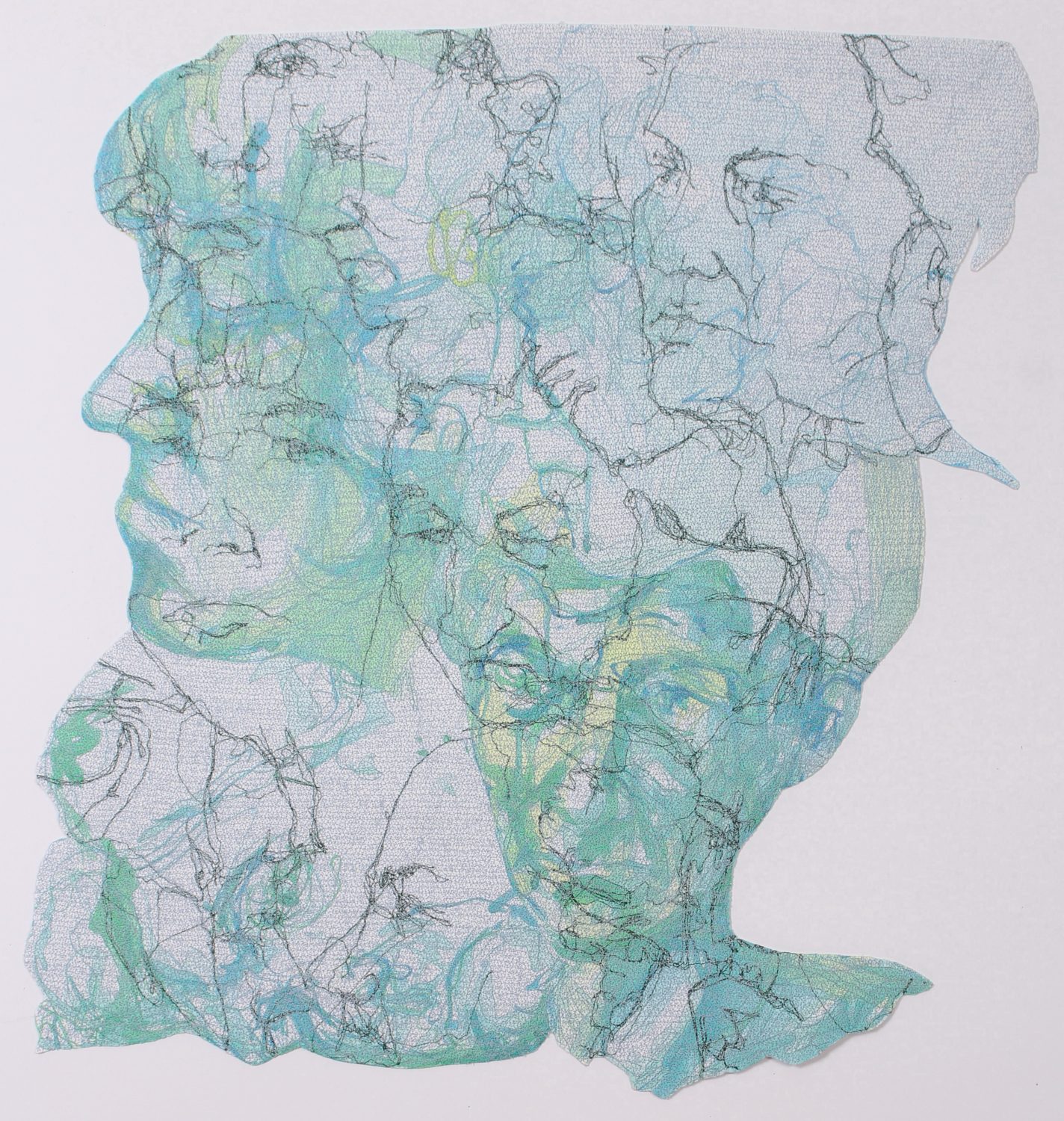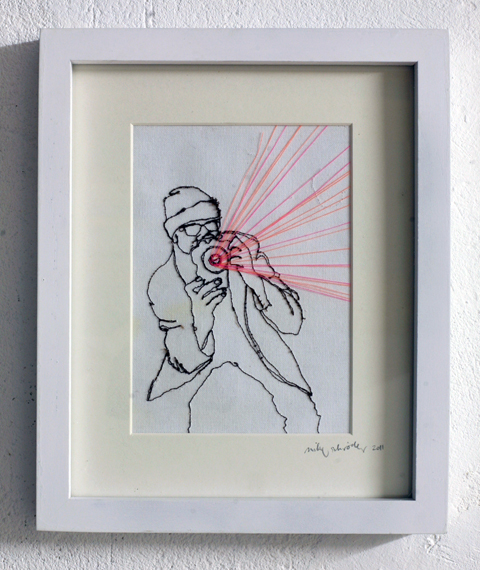Starting out in Machine Embroidery can be intimidating, but first of all, it should be fun.
So you’ve just unpacked your first embroidery machine; You may not know this yet, but if you have the affinity for this craft, you are in for an incredible ride. There are a lot of things that you suddenly need to absorb; settings, tools, and terms, seem to pop up everywhere. It’s no surprise that many people can feel lost. The truth is that things don’t have to be as complicated as they often seem for early embroiderers. Whether you have tried to take on too much at once or some dodgy information from an untrustworthy source has you doubting your instincts, it’s hard not to get in yourself turned around in these early days. That’s why I’m going to walk you through three tips about starting out with machine embroidery that can be hard to believe, but if heeded, can save you a tremendous amount of trouble.

1. Don’t worry about digitizing. (…at least not yet 😉)
Those of you who read my bio will be stunned that I just said that; my primary career over the last 20 years has been as a commercial digitizer. How can I get away with saying that you shouldn’t start learning digitizing from day one? Sadly, many machine vendors are keen to get you sold on an entire package with full-tilt digitizing software with your machine. (By the way, you don’t have to use the brand of software that they sell, either- 3rd party software is sometimes cheaper and better than the package deal. ) Heck, they’ll even sell you on how easy it can be through some version of image-base auto-digitizing, but the truth is that the beautiful designs that made you want to embroider were most likely created manually by people who thoughtfully directed every stitch. It’s not that easy to make great designs, and it takes experience to know why and when to do what your software manual tells you to do.
I tell you not to worry about digitizing first, Because my career in embroidery is even longer than my digitizing career; My first experiences with machine embroidery were as an operator and I was doing that for some time before I digitized. My contention is this; I caught on so quickly in my early digitizing career because I already understood how design files acted on machines and how embroidery affected fabrics. That experience comes from embroidering with and analyzing the designs of other digitizers. If you want to digitize; embroider first.
Furthermore, what even digitzers sometimes don’t understand, is that there are people who have fulfilling craft and professional lives in embroidery who never digitize. You can purchase stock designs and even commission your own custom designs from digitizer if you are willing to pay to have them created. Many embroiderers will never do more than add some pre-digitized text to an existing embroidery design and never feel the worse for it. Though I always recommend that people eventually get entry level digitizing and editing software and take a crack at the craft if they feel drawn to it, it’s not a necessary part of machine embroidery, nor are you somehow inferior if you never want to digitize. I may not understand not wanting to digitize, but I’m very much the kind of person that enjoys pushing stitches around on-screen to get them to do what I want them to do on the machine. If you find the idea of that boring, don’t feel bad if you decide to limit your creative input to choosing a design, thread colors, and deciding where it should go on your given substrate. That said, if you do want to digitize; here’s a place to learn more. I still think digitizing is awesome for everyone, but if nothing else, you can learn to edit what you need to, and you can do it a little later than day one.

2. You are going to need to spend a little on proper supplies to get the best start.
You need supplies. Having a machine and a couple cones of thread will not be enough. You need stabilizer (some call it backing, but stabilizer describes what that stuff is really for), thread, replacement needles, bobbin thread or pre-wound bobbins, and some fabric or test garments to stitch. The sad truth is that all of the folks that tell you to use odd household products that aren’t for embroidery, though their hearts are in the right places and some of the things they suggest might work, are really going to make your first outcomes poorer and your first embroidery sessions harder than they need to be.
There are so many things for you to learn and control, it makes sense to get products meant for embroidery that are of a good quality when you start. There are a couple of reasons for this; first, having the supplies you need come from a reputable vendor means you are more likely to have good outcomes in your embroidery. are meant to serve the purpose for which you are using them, and they are manufactured to strict tolerances. Second, if you elect to use odd, non-embroidery materials that look like or seem like they’d work (a popular myth from my youth was to use coffee filters for stabilizer), you may not be able to tell reliably whether it’s your odd material, your design, or or your embroidery technique that’s at fault if things don’t work. Use standard materials for your testing and embroidery; get a nice medium cut-away stabilizer, proper polyester bobbin thread, and if you need spray adhesives, always go with one specific to embroidery so as not to harm your machine or your work piece. When you start with the kinds of materials that professional embroiderers regularly use for their embroidery, you can be reasonably certain that it’s not your materials at fault when problems occur. Especially when you are first starting, you want to avoid any extra variables that might creep into your embroidery ‘experiments’.
These early embroidery experiences teach you a lot, if you know how to learn from them. When you test a design before placing it on your final garment (and you really always should) test with the kind of supplies, threads, the amount of stabilizer, and if possible roughly the same type and color of fabric as your final garment. That way, we know exactly how they will all interact and we can diagnose any potential problems. If you take this scientific approach and use the right materials from day one, you’ll greatly accelerate your embroidery education through relevant experience.

3. You need to watch the machine run.
In my mind, this is non negotiable. Watch the design build from nothing and how it comes together through the process of embroidering. Believe me, I know how important this is from experience. Watching designs run will reveal how the fabric moves under tension and how the thread interacts with the fabric and itself. Moreover, you’ll be able to take notes about how designs work with pinpoint accuracy about when things happened in the sequence of the design. These notes and observations about the run will, combined with analyzing the digitized designs, allow you to better understand how what you see on-screen leads to what you see on the machine itself. The corollary to this rule is that the screen always lies. Machine embroidery distorts naturally as you stitch any design; not watching the machine run means you’ll have missed the how, why, and when this distortion happens, making it that much harder to know what to do when you want to learn to compensate for the forces of embroidery should you decide to digitize or simply need to tell your hired digitizer what’s going on with their design when trouble arises.

4. You will ruin things. (I ruined things. I sometimes still do…)
Embroidery can go wrong, and if you are actually giving it a fair trial, you’ll definitely get in enough repetitions or go out on a limb with techniques often enough to find yourself with trashed garments. Believe that it will happen and let your self go. It’s not an excuse not to be careful, it’s just something you should forgive yourself for outright. Realize now that your embroidery machine isn’t a ‘thread printer’, you can’t just jam a file in, slot in a garment, and let it roll, no matter what the brochure says. Know now that almost all of us made something truly awful in our first outings and often had to edit and re-run our designs in our early days as digitizers, too. It’s ok that you ruin something, just try to learn why and save the rest of the garment for future test swatches.

You’ll love machine embroidery, even if you don’t love every minute of it.
In the end, machine embroidery is incredibly fun and rewarding; I’d never change what I do and have done in my life, but I find nothing is better for new embroiderers than to start with an honest reckoning of how things work. Start by using a design from a known good digitizer, preferably something simple with not too many colors, hoop up a sample with some good medium cutaway from a reputable supplier, and start stitching. The rest will fall into place as you learn and grow, and early successes will drive you on, and early failures will teach you more than you can imagine when you are still cursing. Forgive yourself, forgive your machine, and get back to it. You’re going to make something incredible.




